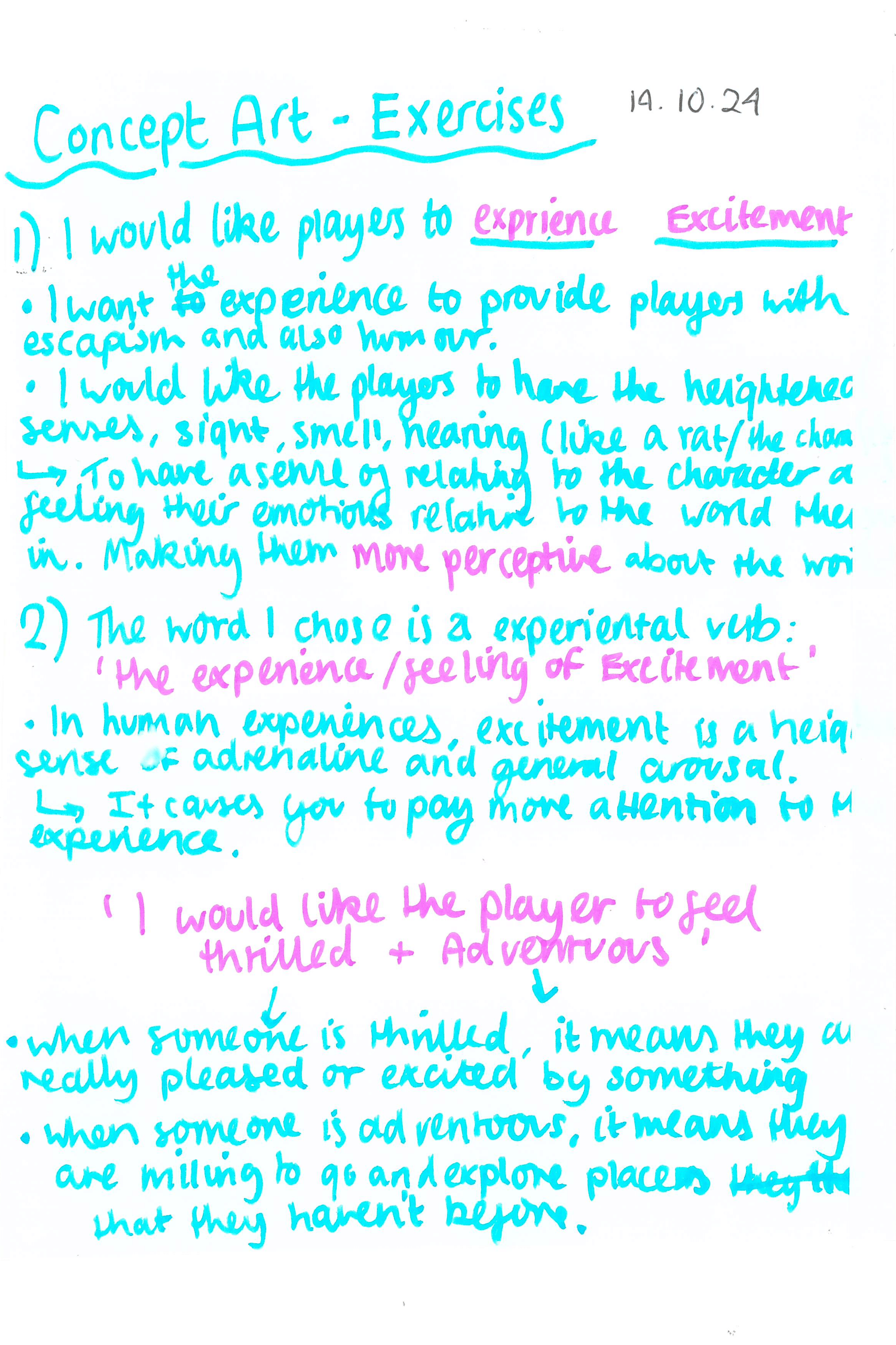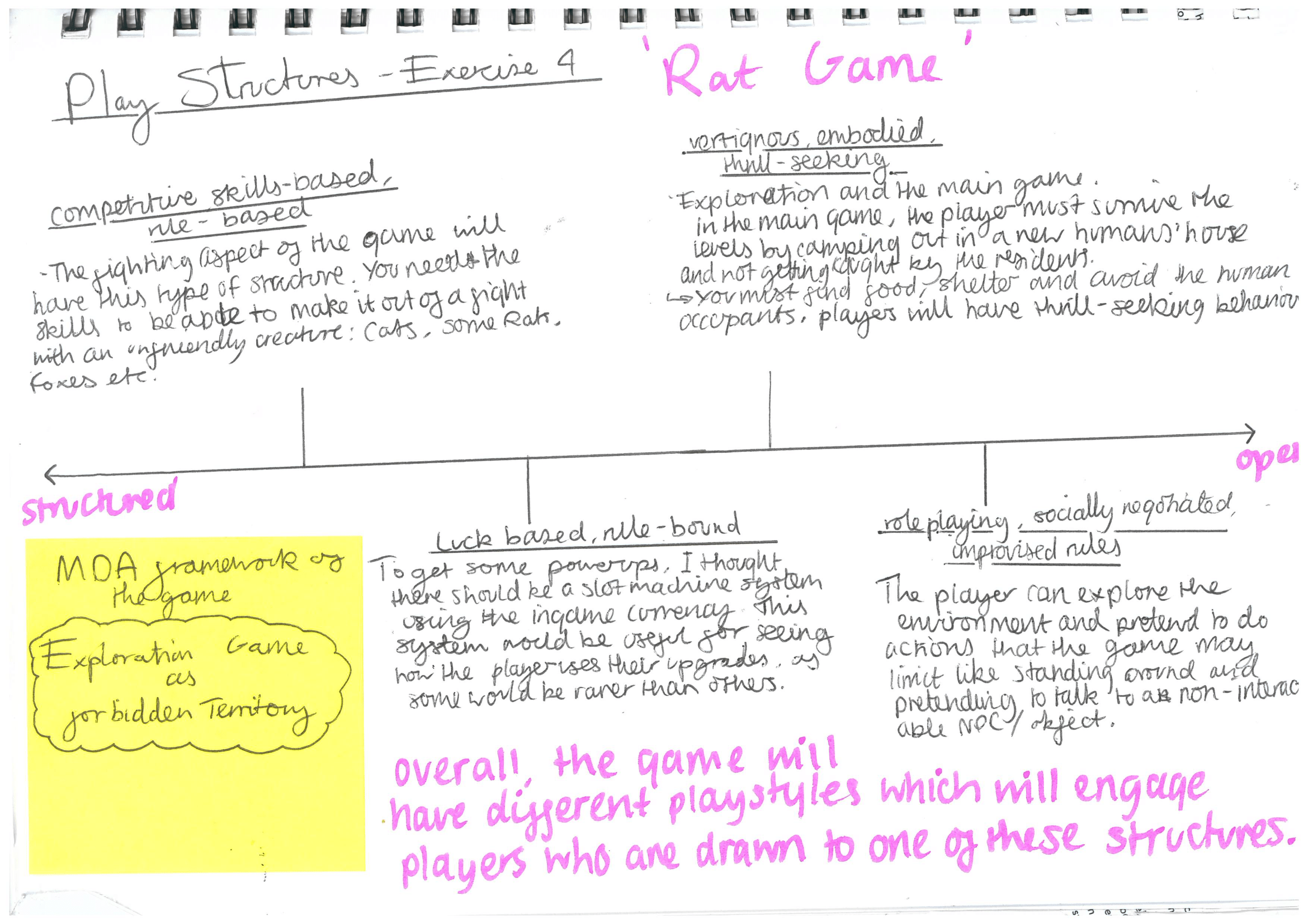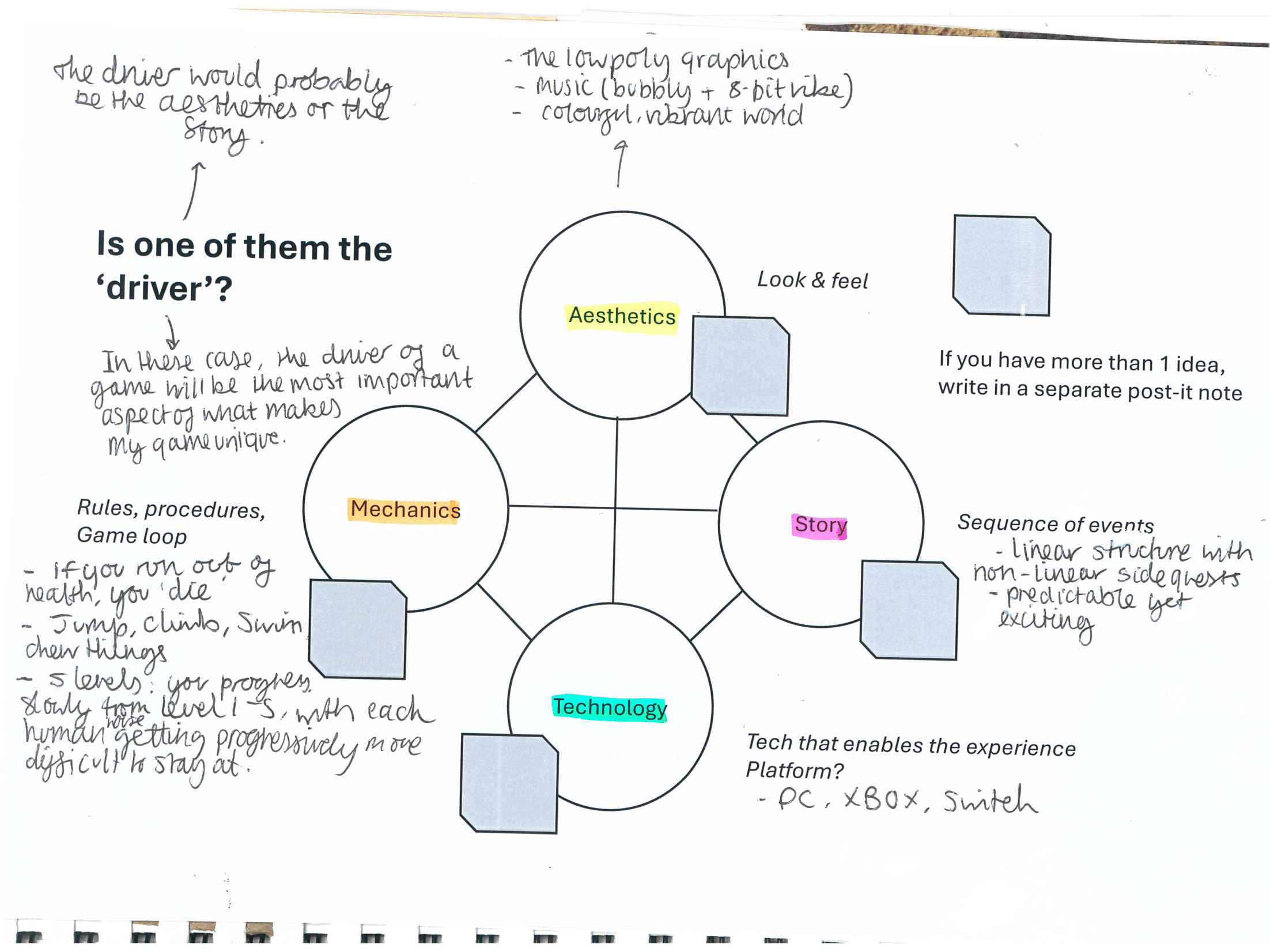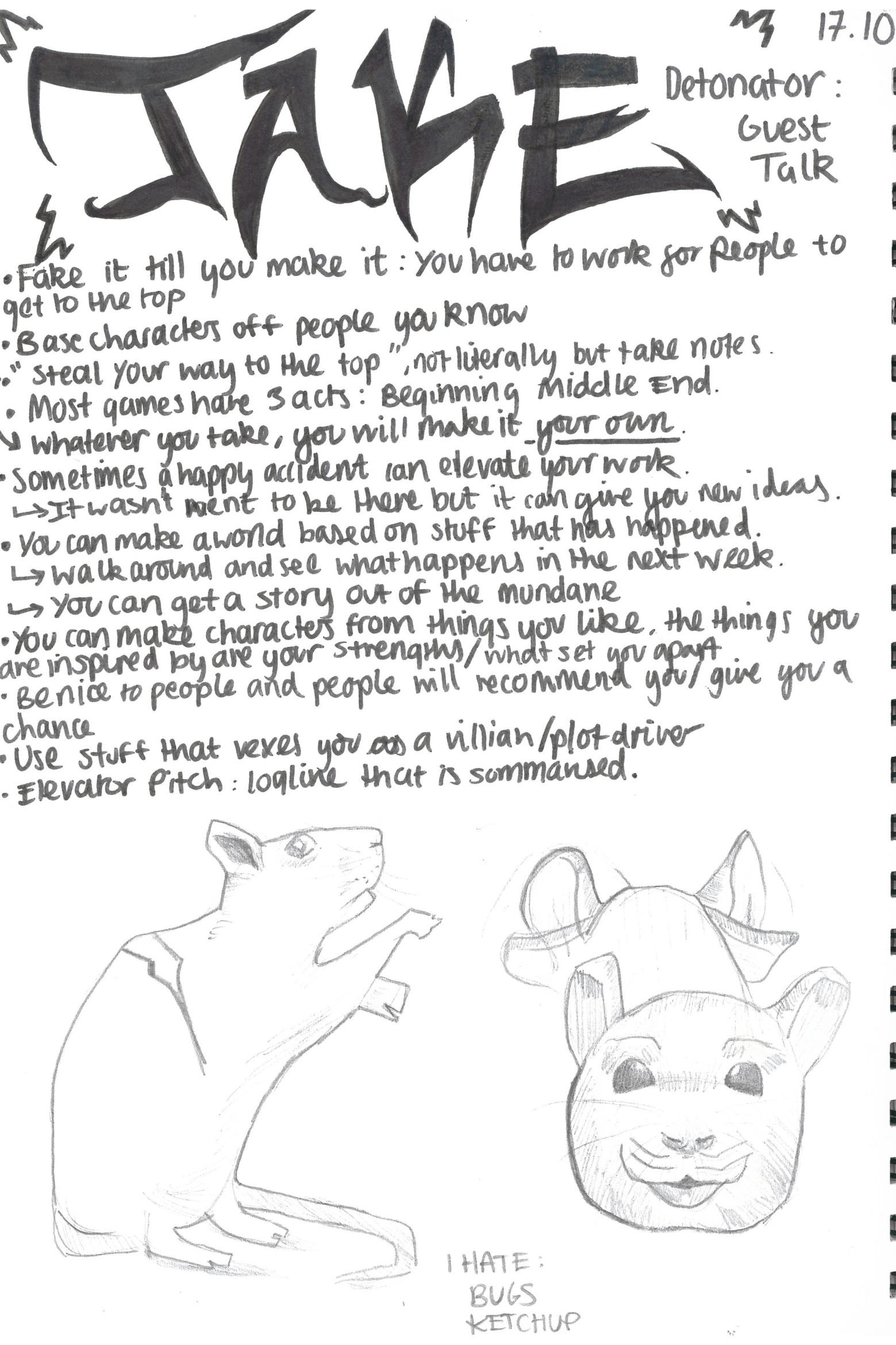During Week 3, we focused on Concept Art and Play structures. Concept Art within games is extremely important, as it gives an idea of the vibe you’re going for in your game. On Monday, we broke down what we wanted our games’ essential experience to be. Once I defined this, I could focus on how the concept art could look like. I can also break this down further into different sections to clearly define my targets.
| Essential Experience | Concept Art Direction | Artists + Games I can study from |
| I would like players to experience excitement, providing them with escapism. I want them to be able to relate to the character, the “avatar” and one way I could achieve this is through customisation options. | Therefore, the Concept art direction should be a bit quirky but also allow enough leeway for the player to be able to identify with the character. Summarised in 3 words: Nostalgic, Quirky, Energising | – Brandon James Greer (Youtube) – Megaman Legends (Game) Sorry, We’re Closed (Game) – Frogun (Game) – RaceWizard (Youtube) – Keven (Youtube) |

Play Structures?
We also looked at different play structures that a game could have. Now that I’ve chosen my game, I can dissect the type of experiences I would want the player to derive from it. There are 4 identified Play Structures:
- Competitive Skills-based, rule-based (Chess)
- Luck-based, Rule-bound (Poker)
- Vertignous, embodied thrill-seeking (Rollercoasters)
- Roleplaying, socially negotiated, improvised rules (LARP)
I saw how each of these play structures could fit into my game, to make it more interesting to play but to also appeal to different types and sides of players who may want a specific thing from my game. I also used the MDA framework to summarise my game, coming up with:
“Exploration Game as Forbidden Territory”
Since in this game, you are playing from the perspective of a Rat, essentially any human structure or non-Rat area is “forbidden territory”. Your goal is to explore areas that you haven’t previously seen before, find food and a nice home to stay in, to the dismay of humans and other house pets. It’s an interesting concept, as you naturally live outdoors, and humans have built on top of land that would have been shared by you and other animals. Yet you are shut out of it and hunted down if spotted, so you always have to be on high alert.

The “Driving” Force of your Game

What is your game’s “Driving Force”? In simpler terms, what is the appeal of your game? I think it’s an important question to ask this to ourselves as game designers because despite attempts to appeal to a wide range of audiences, most of your audience will be drawn to your game from one singular factor. I broke these down more into bite size bits for my particular game:
(click them to open the info up)
AESTHETICS
- Low Poly PS1 Graphics
- Music
- Colourful, Vibrant World
STORY
- Linear Structure with non-linear side-quests
- Predictable yet exciting
TECHNOLOGY
PC, PS, XBOX, Switch
MECHANICS
- Climb, Jump, Dash, Swim, Leap
- No permadeath, only checkpoints.
- 5 Levels
- Currency: Cheez
I think the driving force of this game is the Aesthetics. I want it to specifically have a colourful, PS1 feel like a game whose demo recently came out: Sorry, we’re closed. Minus all the hot people (maybe). I think a lot of people will be drawn to this style because retro graphics are becoming more popular in the game sphere as more 90s and Y2K kids have become games designers/interested in games. I think it would be a nice callback to this era of gaming.
jAKEDetonator – Thursday Guest Lecture
Lastly, on Thursday, we had a guest lecture from jAKEDetonator, a comic artist whose portfolio expands over several well-known IPs as well as restaurants, Games, small indie projects, music cover art, and other stunts. His lecture was really fun, with him bouncing against the walls, energetically wizzing through all of his projects.
My favourite one was the kid Samurai he did for a Japanese restaurant, he used himself when he was younger for a reference for the hairstyle and “attitude”. He told us that you should always take inspiration from people who are around you, such as friends, family and strangers. I’m glad I already do this, as what you observe and believe ultimately skews the outcome of the media you produce. I find that observing people from different walks of life keeps me open-minded, and it’s great for making diverse, interesting characters.
We also got to hear about how he worked his way to the top. His biggest message was:
Fake it till you make it! No-one knows what they’re actually doing.
jAKEDetonator
It’s not a crazy or revolutionary phrase to most, but it’s still very very important when making games and any other media (and the world in general). Everyone is still “a scared child”, the guys in suits making important decisions in the world are scared underneath it all. We have to fake confidence to actually be confident. I’m definitely keeping this advice in general

That’s it for now! This week was quite productive and the guest lecture was the highlight of the week (on my birthday too!) so I will be looking forward to his next lecture next Thursday.
Hope you enjoyed reading!